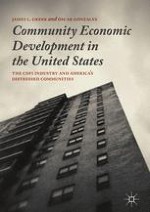2017 | OriginalPaper | Buchkapitel
2. (Re)Discovering Poverty and Economic Underdevelopment: Michael Harrington’s
The Other America: Poverty in the United States
verfasst von : James L. Greer, Oscar Gonzales
Erschienen in: Community Economic Development in the United States
Verlag: Palgrave Macmillan US
Aktivieren Sie unsere intelligente Suche, um passende Fachinhalte oder Patente zu finden.
Wählen Sie Textabschnitte aus um mit Künstlicher Intelligenz passenden Patente zu finden. powered by
Markieren Sie Textabschnitte, um KI-gestützt weitere passende Inhalte zu finden. powered by
